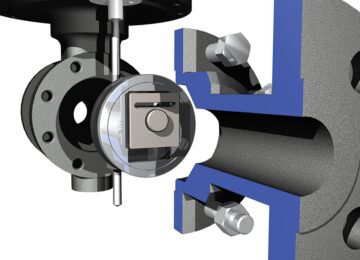Key Takeaways:
- Streamlining pick and pack processes through barcode scanning and efficient warehouse layout can enhance operational efficiency.
- Using inventory management software and adopting just-in-time inventory management can optimize inventory levels and reduce costs.
- Implementing automation technologies, utilizing data analytics, and reducing packaging waste can provide cost-effective solutions.
- Implementing quality control measures, enhancing order picking accuracy, and reducing returns and customer complaints improve order accuracy.
- Reducing order fulfillment time, enhancing packaging and presentation, and improving communication and transparency optimize customer satisfaction.
Increase Operational Efficiency
Streamlining Pick & Pack Processes
Streamlining pick & pack services processes is crucial for businesses looking to enhance their operational efficiency. This involves evaluating and optimizing each step of the process, from receiving orders to packing and shipping them.
One way to streamline pick and pack processes is by implementing barcode scanning technology. By scanning barcodes on products and orders, employees can quickly and accurately locate and retrieve the items from the warehouse. This eliminates the need for manual searching, reducing the time it takes to fulfill each order.
Another important aspect of streamlining the pick and pack process is organizing the warehouse layout in a logical and efficient manner. This includes grouping commonly ordered items together, ensuring easy access, and reducing unnecessary travel time for employees.
Optimizing Inventory Management
Efficient inventory management plays a vital role in the overall efficiency of pick and pack services. By utilizing inventory management software, businesses can accurately track and monitor stock levels, ensuring that popular items are always in stock while minimizing excess inventory.
Implementing a real-time inventory management system allows businesses to have a clear view of their stock levels at any given moment. This helps them make informed decisions when it comes to reordering and restocking, preventing stockouts and minimizing the chance of delayed shipments.
Furthermore, adopting a just-in-time inventory management approach can help businesses reduce holding costs and optimize warehousing space. By receiving new inventory only when needed, businesses can free up valuable warehouse space for other purposes and reduce the risk of inventory obsolescence.
Enhancing Warehouse Organization
An organized warehouse is essential for efficient pick and pack services. By implementing proper labeling, categorization, and segmentation strategies, businesses can minimize the time spent searching for products and reduce the chance of picking errors.
One effective strategy for enhancing warehouse organization is the implementation of an automated storage and retrieval system (AS/RS). AS/RS systems use robotics and automation to store and retrieve products, minimizing the need for manual handling and reducing the risk of errors.
By utilizing efficient warehouse management software, businesses can also optimize the layout and placement of products within the warehouse. This includes determining the most suitable storage options for each product, such as bins, racks, or shelves, based on factors like size, weight, and turnover rate.
Cost-Effective Solutions
Implementing Automation Technologies
Implementing automation technologies is a cost-effective solution for businesses looking to improve their pick-and-pack operations. Automation reduces the reliance on manual labor, minimizing human error and increasing overall efficiency.
One example of automation technology is the use of conveyor systems to transport products within the warehouse. By automating the movement of products between different stages of the pick and pack process, businesses can significantly reduce the time it takes to fulfill orders.
Another automation technology that can be implemented is robotic process automation (RPA). RPA can perform repetitive and mundane tasks, such as data entry and order processing, with high accuracy and efficiency. This frees up human employees to focus on more value-added activities.
Utilizing Data Analytics for Decision Making
Data analytics plays a crucial role in making informed decisions regarding inventory management, order fulfillment, and overall business operations. By utilizing data analytics tools and software, businesses can gain valuable insights into customer preferences, demand patterns, and inventory trends.
With this data, businesses can accurately forecast demand and optimize their inventory levels accordingly. By stocking the right quantities of products, businesses can avoid overstocking or stockouts, leading to reduced costs and improved customer satisfaction.
Data analytics can also help identify inefficiencies in the pick-and-pack process by analyzing order fulfillment times, error rates, and other performance metrics. By identifying bottlenecks and areas for improvement, businesses can make data-driven decisions to enhance operational efficiency.
Reducing Packaging Waste and Material Costs
Reducing packaging waste and material costs is not only environmentally responsible but also cost-effective for businesses. By optimizing packaging processes and materials, businesses can minimize waste and save on packaging expenses.
One way to reduce packaging waste is by implementing sustainable packaging solutions, such as using biodegradable or recyclable materials. Not only does this help reduce environmental impact, but it can also attract environmentally-conscious customers.
Additionally, businesses can analyze packaging processes to identify opportunities for waste reduction. This includes optimizing package sizes to minimize unused space and utilizing automated packaging equipment to ensure accurate and efficient packaging.
Improving Order Accuracy
Implementing Quality Control Measures
Implementing quality control measures is crucial for ensuring order accuracy and customer satisfaction. Quality control involves conducting thorough inspections and checks at various stages of the pick and pack process to identify and correct any errors or discrepancies.
One effective quality control measure is the implementation of random sampling inspections. By randomly selecting a certain percentage of orders for inspection, businesses can ensure that the correct products are being picked and packed accurately.
Utilizing technology, such as barcode scanning and image recognition systems, can also help in verifying the accuracy of picked items. These systems can instantly compare scanned or captured images of products with their corresponding barcodes or images in the database, reducing the risk of picking errors.
Enhancing Order Picking Accuracy
Order picking accuracy is crucial for fulfilling customer orders correctly. By implementing efficient order-picking strategies and utilizing technology, businesses can enhance order-picking accuracy and minimize errors.
One strategy is the implementation of zone picking, where warehouse employees are assigned specific zones to pick products from. This helps minimize the chances of confusion and errors when multiple employees are picking orders simultaneously.
Using pick-to-light or pick-to-voice technology can also improve order-picking accuracy. These technologies provide real-time instructions to warehouse employees, guiding them to the correct location and quantity of items to be picked, reducing the risk of picking errors.
Reducing Returns and Customer Complaints
Returns and customer complaints can be costly for businesses and negatively impact customer satisfaction. By focusing on improving order accuracy, businesses can reduce the number of returns and customer complaints.
Implementing a robust returns management system allows businesses to efficiently process and handle returns, minimizing the impact on overall operations. This includes clearly documenting return policies, providing customers with easy-to-follow return instructions, and promptly processing returns.
Furthermore, businesses can analyze the reasons for returns and customer complaints to identify root causes and implement corrective actions. This could include addressing issues such as incorrect product listings, damaged packaging, or inaccurate order fulfillment.
Optimizing Customer Satisfaction
Reducing Order Fulfillment Time
Reducing order fulfillment time is essential for optimizing customer satisfaction. Customers expect their orders to be processed quickly and efficiently, and any delays can negatively impact their perception of a business.
One way to reduce order fulfillment time is by implementing advanced order processing systems that automate order routing and tracking. These systems can automatically assign orders to the nearest fulfillment center or allocate inventory based on availability and customer location, reducing processing time.
Utilizing real-time inventory management and order tracking systems can also help businesses provide accurate and up-to-date information to customers regarding stock availability and order status. This transparency improves customer satisfaction by reducing uncertainty and keeping customers informed throughout the fulfillment process.
Enhancing Packaging and Presentation
The packaging and presentation of products play a significant role in customer satisfaction. By focusing on enhancing packaging and presentation, businesses can create a positive and memorable unboxing experience for customers.
Investing in high-quality packaging materials and designs can convey a sense of value and professionalism to customers. This includes using sturdy boxes, attractive branding, and protective packaging materials to ensure that products arrive in pristine condition.
Personalization is another way to enhance packaging and presentation. Including personalized notes or small gifts can create a connection with customers and make the unboxing experience more memorable and special.
Improving Communication and Transparency
Effective communication and transparency are key to optimizing customer satisfaction. Customers appreciate businesses that provide clear and timely communication throughout the order fulfillment process.
Implementing order tracking systems that allow customers to track their orders in real-time can significantly improve customer satisfaction. These systems provide visibility into the status and location of their orders, reducing anxiety and improving trust.
Furthermore, businesses should strive to provide proactive and responsive customer support. Promptly addressing customer inquiries, resolving issues, and keeping customers informed of any delays or changes in their orders can go a long way in building trust and loyalty.
In conclusion, efficient pick and pack services are essential for boosting business operations. By increasing operational efficiency, implementing cost-effective solutions, improving order accuracy, and optimizing customer satisfaction, businesses can enhance their overall performance and competitiveness. These strategies, when combined with proper inventory management, warehouse organization, automation technologies, data analytics, and quality control measures, can lead to significant improvements in productivity, cost savings, and customer satisfaction. By continuously evaluating and improving pick and pack processes, businesses can achieve sustainable growth and success in today’s competitive market.
FAQ
Question: What is pick and pack services?
Answer: Pick and pack services involve the process of selecting items from inventory and packing them into containers for shipping to customers.
Question: How can barcode scanning improve pick and pack processes?
Answer: Barcode scanning technology helps employees quickly locate and retrieve items from the warehouse, reducing manual searching and speeding up order fulfillment.
Question: What is just-in-time inventory management?
Answer: Just-in-time inventory management is an approach where businesses receive new inventory only when needed, minimizing holding costs and optimizing warehouse space.
Question: What are some cost-effective solutions for pick and pack operations?
Answer: Implementing automation technologies, utilizing data analytics, and reducing packaging waste can provide cost-effective solutions for pick and pack operations.
Question: How can quality control measures improve order accuracy?
Answer: Quality control measures, such as random sampling inspections and technology-based verification systems, help identify and correct errors in the pick and pack process, improving order accuracy.
Question: What is zone picking?
Answer: Zone picking is a strategy where warehouse employees are assigned specific zones to pick products from, minimizing confusion and errors during order fulfillment.
Question: How can businesses reduce returns and customer complaints?
Answer: By focusing on improving order accuracy and implementing a robust returns management system, businesses can reduce the number of returns and customer complaints.
Question: How can businesses optimize customer satisfaction?
Answer: Businesses can optimize customer satisfaction by reducing order fulfillment time, enhancing packaging and presentation, and improving communication and transparency throughout the fulfillment process.
Useful Resources
- Inventory Management – A website providing information on inventory management solutions and best practices.
- Warehouse Management – A comprehensive resource for warehouse management techniques, software, and strategies.
- com – A website offering insights and resources on automation technologies for businesses.
- Data Analytics – A platform providing educational content on data analytics techniques and tools for businesses.
- Sustainable Packaging – An organization dedicated to promoting sustainable packaging practices and providing resources for businesses.
- International Organization for Standardization (ISO) – The official website of ISO, where businesses can find standards and guidelines related to quality control and management systems.
- Qualtrics Experience Management – A platform that helps businesses measure and improve customer satisfaction through feedback and data analytics.
- CustomerThink – An online community and resource platform for businesses focusing on customer-centric strategies and best practices.











